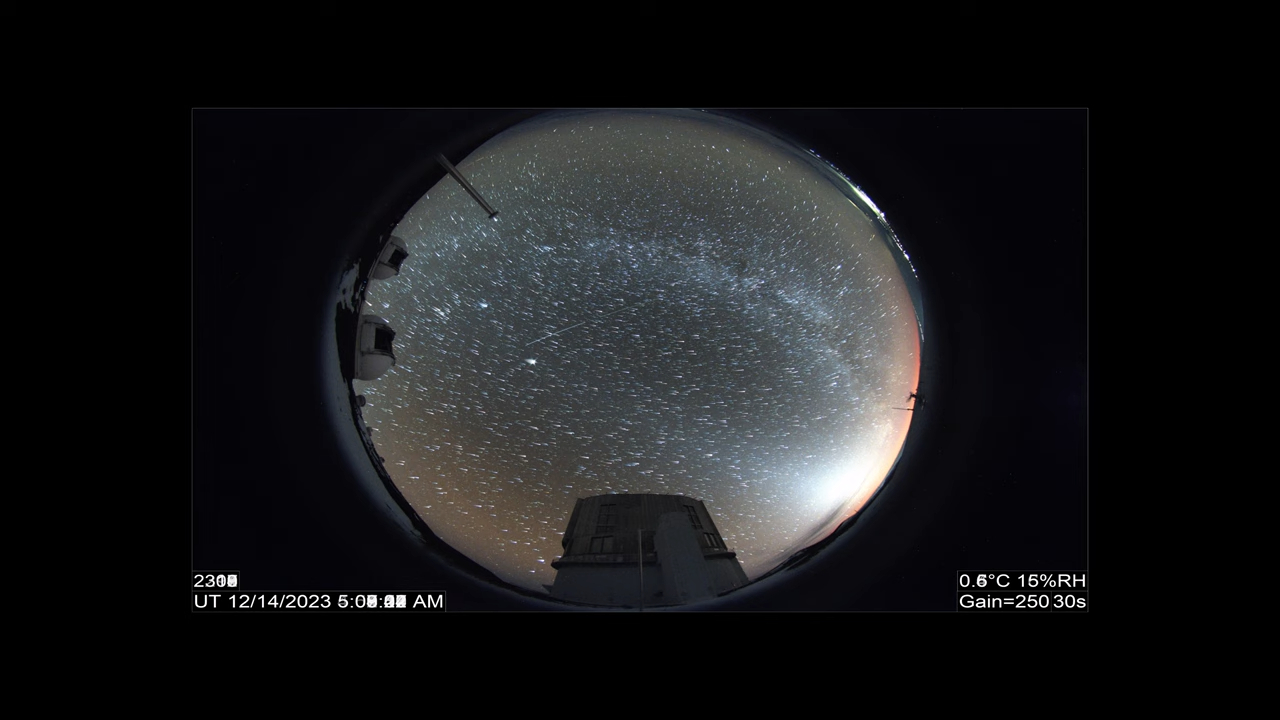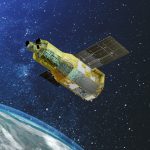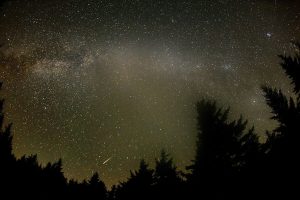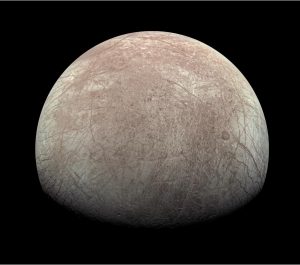
Global Space News: Do the Geminids come from one of the rarest space rocks found on Earth?
The Geminid meteor shower is an annual spectacle that lights our sky with shooting stars at the end of each year. The origin is thought to be chips of debris being shed by Phaethon; a seemingly rocky asteroid that grows a tail like a comet as it approaches the Sun. Investigating this behaviour is the goal of JAXA’s DESTINY+ mission, which is planning a close flyby to examine the unusual mix of asteroid and comet characteristics. But new research has suggested that the activity of the asteroid might not even be its most unusual attribute.
View of the Geminid Meteor Shower this year (2023) over Mauna Kea in a 180-degree VR view. It was captured by the Subaru Telescope’s all-sky camera (original link).
Mid-infrared spectra from the Spitzer Space Telescope has revealed that the target object for the DESTINY+ mission, Phaethon, is composed of a material similar to carbonaceous meteorites known as CY chondrites. The “Y” in CY comes from the Yamato Mountains in Antartica! This mountain range is approximately 300km southwest of Syowa Station, and where geological researchers from the Japanese Antarctic Research Expedition discovered the world’s first Antarctica meteorite.
Arai Tomoko, DESTINY+ Principal Investigator,
Principal Staff Scientist, Planetary Exploration Research Center, Chiba Institute of Technology
Results have recently been published from NASA’s Spitzer Space Telescope, which observed the mid-infrared emission from the surface of Phaethon. The intensity of the different wavelengths (the “spectra”) forms a fingerprint related to Phaethon’s composition that can be compared to other objects. The closest match to Phaethon’s rock seems to be carbonaceous chondrite meteorites. This type of meteorite is quite a rare find on the Earth’s surface, making up < 5% of known meteorites. Moreover, the best match to Phaethon’s spectra are the “CY” carbonaceous chondrites, and especially rare. Studying the few examples of CY chondrites in the laboratory has revealed a little of their history, which is consistent with that of Phaethon and could possibly explain the asteroid’s strange behaviour.
CY chondrites are a rare type of chondrite that has undergone alteration due to water in its parent body, and then been heated to a maximum of nearly 800℃, which dehydrates it. Phaethon, like asteroids Ryugu and Bennu, is rich in carbon and organic matter. The thermal history of Phaethon, which is scorched by the Sun to temperatures close to 1000K (723℃), is similar to that of CY chondrites.
It has been suggested that the radiant heat from Phaethon’s approach to the Sun may produce carbon dioxide and sulphur gas, through the thermal decomposition of carbonates and sulphides, and this may be the cause of dust emissions from Phaethon. On the other hand, other work has suggested Na sublimation or electrostatic levitation is the cause. As the mysteries of Phaethon’s dust continue to climb, expectations are high for the DESTINY+ mission!
Arai Tomoko


It is not only the prospect of understanding Phaethon’s dust tail that makes the potential match to CY chondrites interesting. Carbonaceous chondrites are rich in hydrated minerals and organic molecules that required water to form. This suggests the rocks once belonged to larger “parent” bodies that could support liquid water, and may have actually delivered this water and the first organics to the Earth. The various origins of the carbonaceous chondrites are therefore fascinating probes of the first materials on the planets and the beginnings of the habitability. Yet despite their importance, there are challenges in uncovering their history.
CY chondrites are a type of carbonaceous chondrites, which are rare among meteorites. CY chondrites are “Yamato” type carbonaceous chondrites, which are rare even amongst that class, and their origin is not precisely known. If the relationship between Phaethon and CY meteorites can be confirmed, it will clarify not only the relationship between comets and carbonaceous chondrite meteorites, but also the origin of both. I am really looking forward to the results from DESTINY+!
Usui Tomohiro, Astromaterials Science Research Group Manager
Not only are carbonaceous chondrite meteorites rare, but the ones that do fall to Earth are contaminated by our own planet. This makes it very tricky to examine the individual chondrite classes and map their evolution through the Solar System. The best but difficult solution is to identify examples of chondrite classes while they are in space and visit the uncontaminated examples.

The Hayabusa2 mission is an example of this solution in action, visiting an asteroid that was suspected to match the carbonaceous chondrites. Asteroid Ryugu proved to match the CI carbonaceous chondrites: another rare type that is incredibly pristine, having not changed significantly since the start of the Solar System. The composition of Ryugu therefore taught us about the very early materials that formed the planets, while the asteroid’s current orbit and characteristics provided information on how that material arrived close to the Earth.
Meanwhile, CY chondrites have experienced significant heating that dehydrated the minerals. This is a different evolutionary pathway to CI chondrites that needs to be understood in order to map the movement of habitable material during planet formation. If Phaethon does prove to be a CY chondrite, DESTINY+ would give us the first close-up look at the uncontaminated example, and offer more clues about their origin.

It is an interesting discovery that the spectrum observed by infrared spectroscopy of the surface of Phaethon (which is thought to be a comet-asteroid transition object that creates the Geminid meteor shower) has been found to be close to that of a CY chondrite; a primitive carbonaceous chondrite meteorite that has undergone heating and dehydration. If Phaethon is the parent body of CY chondrites, this would be a very interesting case in which CY chondrites could have originated from the possible parent body of the Geminids meteor shower. It has also been previously assumed that the heat source for dehydrating CY chondrites originated from their parent bodies, but this would suggest a new result that this is from heating by the Sun.
On the other hand, it would be interesting if, as we have seen in the case of asteroid Ryugu, that the surface spectrum of the asteroid was affected by dehydration of the surface regolith due to space weathering, and fresh cometary material survived inside. Hopefully, the results from the DESTINY+ mission could clarify this point!
Yada Toru, Astromaterials Science Research Group
It seems that anyone wishing upon the shooting stars of meteor showers would struggle to hope for a more interesting object than Phaethon.
“Global space news” is a chance for us to highlight important developments across the world and share our excitement of these achievements.
Further information:
 Previous Post
Previous Post Next Post
Next Post






